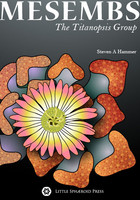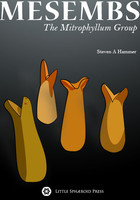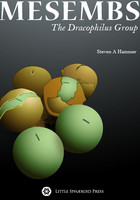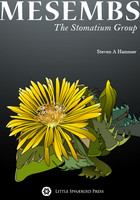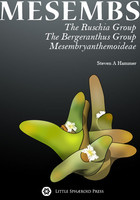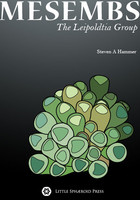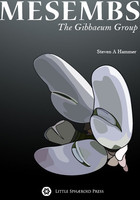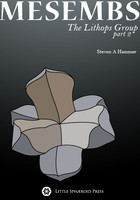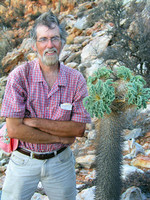About Steven Hammer's Mesemb series
In our series Mesembs, every horticulturally desirable split-rock species will be illustrated in color and given a complete historical, ecological, and horticultural treatment, most for the first time. Eight planned volumes, penned by mesemb expert Steven Hammer, will appear on a 12 to 18–month schedule and be individually compact and affordable.
Titles are arranged by evolutionary relationships: similar plants are grouped together to allow the reader to gain insight into the dynamics of the family’s evolution by drawing comparisons and contrasts from both ecological and horticultural perspectives. Such an arrangement affords each volume a manageable number of species, with each taxon receiving a page or two of text and photos. Such an arrangement also makes the books affordable. Each new 120-160–page, full-color, hardback volume will appear on an 18-month schedule.
Other mesemb groups (the shrubs, the groundcovers, the few aspiring trees) would also benefit from a similar treatment, and many groups—indeed most—are still radically under-studied. We hope that this project will spur further research and expand in scope to include all the mesembs—and a wider array of authors.
A brief description of each book’s horticultural highlights is presented on the following pages, including an outline the genera to be covered in each volume and a list of the genera from each proposed natural group that will not be covered, but which may appear in later offerings.
Project background
The literature on succulent plants, though rich, remains patchy, inbred, and often inaccessible. Nowhere is the gap between scholarly and popular information more obvious than in the mesemb family (Aizoaceae or Mesembryanthemaceae). Only three genera—Gibbaeum, Lithops, and Conophytum—have seen a detailed treatment in book form, leaving another 40–50 genera full of choice cultivated species whose stories remain untold.
These omissions must be addressed not only to satisfy the interest of hobbyists and scholars, but also because this botanical richness is endangered by land development and other environmental issues. Documenting Earth’s biodiversity is of fundamental importance, now more than ever.
There are few prior projects in the succulent plant literature of the size and scope currently proposed. Backeberg’s Cactus Lexicon (in six thick volumes) systematically treated the entire cactus family in a level of detail yet unmatched. Herman Schwartz’s Strawberry Press documented the succulent euphorbias in ten beautifully illustrated volumes of Euphorbia Journal. But the mesemb family has received only highly technical treatments, or popular overviews at the genus level. Mesembs of the World (Briza 1998) is the best and most recent work of the latter type, and serves as a superb introduction to the family, following a format established by Herre and Jacobsen thirty and forty years earlier.
Our closest model is Schwantes’s Flowering Stones, which has a proto-phylogenetic arrangement and treats many species in some detail. That volume is only sparsely illustrated and in black and white. We propose to fill in these sketches, giving each species its history, its natural and horticultured contexts, and at least one illustration, preferably many.
Our approach is both old and new. The format is a series, like Euphorbia Journal, but the organization is not alphabetical or geographic, but rather phylogenetic, a device that allows for new volumes to be introduced into the series without disrupting order. The series can—and we hope it will—grow to encompass the entire family.
The author
Steven Hammer is widely recognized as one of the foremost experts on mesemb horticulture and taxonomy, and he has extensive field experience—some 30 trips to South Africa and Namibia. As an author, his is a uniquely gifted voice—dodging the old clichés of botanical writing to present thoughtful and engaging text that is both accurate and funny, irreverent and beautiful.
Steven has authored four stunning books, entire special issues of magazines, and hundreds of technical and popular articles in his long career, but he's received very little income from this vast output. His book Lithops, Treasures of the veld has sold some 8000 copies in five languages and is now in its second edition, but it brought him a pittance. Little Sphaeroid Press, along with our generous sponsors, are devoted to furthering the writing career of this unique voice in the succulent plant community by paying him fairly for his efforts. Steven considers this project a chance at renewal and, as he says, an opportunity to give these other plants the same scrutiny and love he devoted to Lithops and Conophytum.
